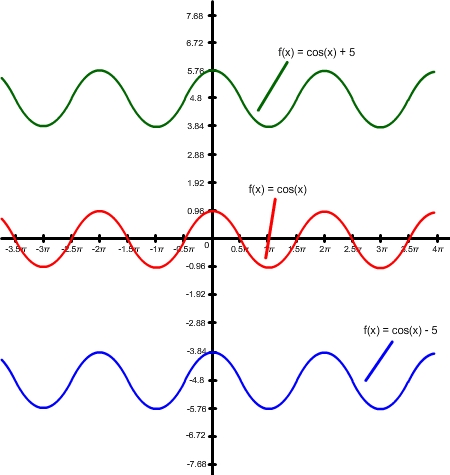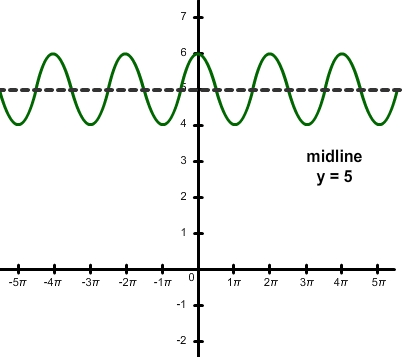Vertical Shift
The last transformation to discuss is the vertical shift. In the general equations f(x) = Acos(kx - c) + h and f(x) = Asin(kx - c) + h, the h determines whether you will shift the graph up or down, and by how many units.
If h > 0, the graph shifts upwards.
If h < 0, the graph shifts downwards.
If h = 0, the graph does not shift vertically.
Example:

Notice that when 5 is added to f(x) = cos(x), the graph moves 5 units up. Likewise, when 5 is subtracted from f(x) = cos(x), the graph moves 5 units down.
A new reference line, called a midline, is created, which will help when graphing these functions. In the example of f(x) = cos(x) + 5, the midline is y = 5.

This midline is the new axis of your graph. In general, the midline is defined as y = h.